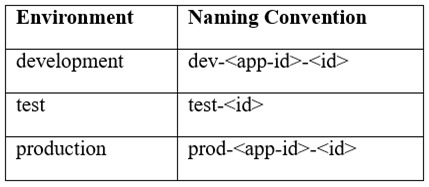The CTO releases a new company policy stating that all workloads need to be managed through vRealize Automation (vRA) so that access to day 2 operations can be controlled centrally through a policy. Prior to this policy, the App-Dev team deployed all of their 300 development and test workloads within a single public cloud vendor. The naming convention used for workloads is provided in the following table:

The App-Dev team needs to onboard all of the running development workloads into vRA and allocate them to the App-Dev project. The administrator creates a new Onboarding Plan and specifies the correct project and cloud account.
Which action should the administrator complete next to meet these requirements?